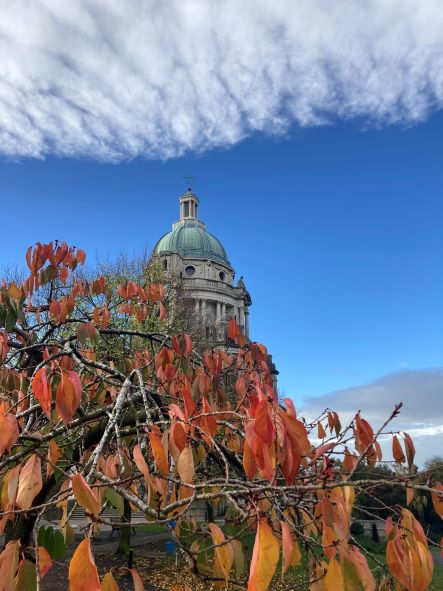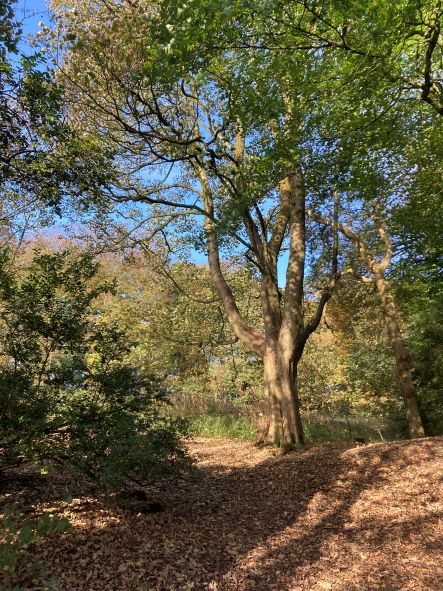Sunday 30th October

The walk started from outside the café in Williamson Park, then around Fenham Carr Nature Reserve and finishing back in the park looking around at the autumn spectacles.
Nuthatch, anyone?
Before we’d even got into Fenham Carr Nature Reserve a couple of nuthatches made themselves known. If you’ve never (knowingly) heard their calls before, check out the video below… Although this is in The Netherlands, this is the same species we get in the UK and gives a really good idea of the distinctive calls and song of the male and you get a great close up of their colouration and markings (including their ‘bandit’ mask). This is a lovely little bird which has (according to the Woodland Trust) increased by a whopping 250% since the 1970s. Reliant on large, mature trees, Williamson Park is an ideal place to find them (and these ones are not in the least bit shy of people).
Fenham Carr Nature Reserve
We had hoped to spend some time watching birds on the feeders in Fenham Carr. However, the birds had other ideas. This is both the joy and pain of wildlife watching – you never know what you’ll get.
The weather at this point was glorious, so instead we walked and talked a little about different tit species. The Blue Tit, Great Tit and Long-tailed Tit, which are all social species. The Blue and Great Tits are infamous for ‘breaking in’ to milk bottles. They learned this to access the lipids from the cream (they cannot digest the other components in the milk). This was first observed in 1921 Swaythling in England. By 1949 this had spread to individuals in hundreds of places in England, Wales and Ireland (from ‘The Genius of Birds’ by Jennifer Ackerman). This seems to have died out now in the Tit species, but there is anecdotal evidence to suggest that Jackdaws have recently taken up the mantle in rural areas.
Long-tailed tits, by the way, are one of my favourite species: not least because my Dad calls them ‘flying lollipops’. This is not a closely related species to Blue and Great tits, but they can often be found together. Long-tailed tits are often heard first from their high-pitched, chattering calls. Their calls, distinctive appearance and charismatic nature make them a really easy bird to get to know.

Rainy Jays
Towards the end of the walk, the heavens opened and we took shelter under a lovely Yew tree. Did you know that two chemotherapy drugs are derived from different Yew species – the European and Pacific Yew trees?
Waiting for the rain to pass, we spotted a couple of Jays in the oak trees opposite us. They were almost certainly looking for acorns. This woodland bird species is rather exotic-looking, but is a native UK species. It is easily identifiable from its distinctive blue wing panels and black, white and pinkish brown plumage. This is another great species for the novice bird-watcher to learn.

Not a bad end to the day!
Poetry corner
As this walk was the day before Halloween, I had to include something suitable for the season as this week’s poem.
Bat Words
Why do people
get tight up,
because we here
hang downside up?Are scared they of
our bat wings black?
Or of our knees
on front to back?We’re bottom up
but don’t please fuss –
for you’re the way
round wrong to us!
Liz Brownlee, from ‘RSPB Anthology of Wildlife Poetry’ (out of print, but available second-hand)
